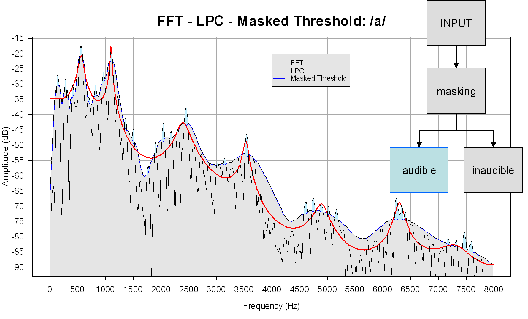Irrelevance Filter 'What You See is What You Hear!'
Irrelevance Filter ”What You See is What You Hear!”
Research on hearing theories has developed consistent models of simultaneous masking. Masking is the psychoacoustical process by which the threshold of audibility of a sound is raised by the presence of another (masking) sound. The masking customarily is expressed in decibels.
STx provides a computational model for evaluating the masked threshold of any running audio signal. The signal is split up into two spectral layers: the lower one containing the masked spectral components and the upper one, which holds all unmasked spectral components. By subtracting the masked spectral components from the original sound, spectrograms can be created which only show the auditory relevant information. After filtering all masked signal parts, the remaining signal contains no psychoacoustic irrelevant signals. It can therefore be assumed to be close to the excitation signal delivered by the auditory periphery to higher auditory centers.
Figure: Masking refers to the psychoacoustic process, which raises the hearing threshold of a sound (in quiet) in the presence of another sound. Masking can make the masked sound inaudible or partly inaudible. The masker masks the maskee. The computational model of auditory masking uses adaptive filtering. The difference between LPC spectrum and the masked threshold is shown.
